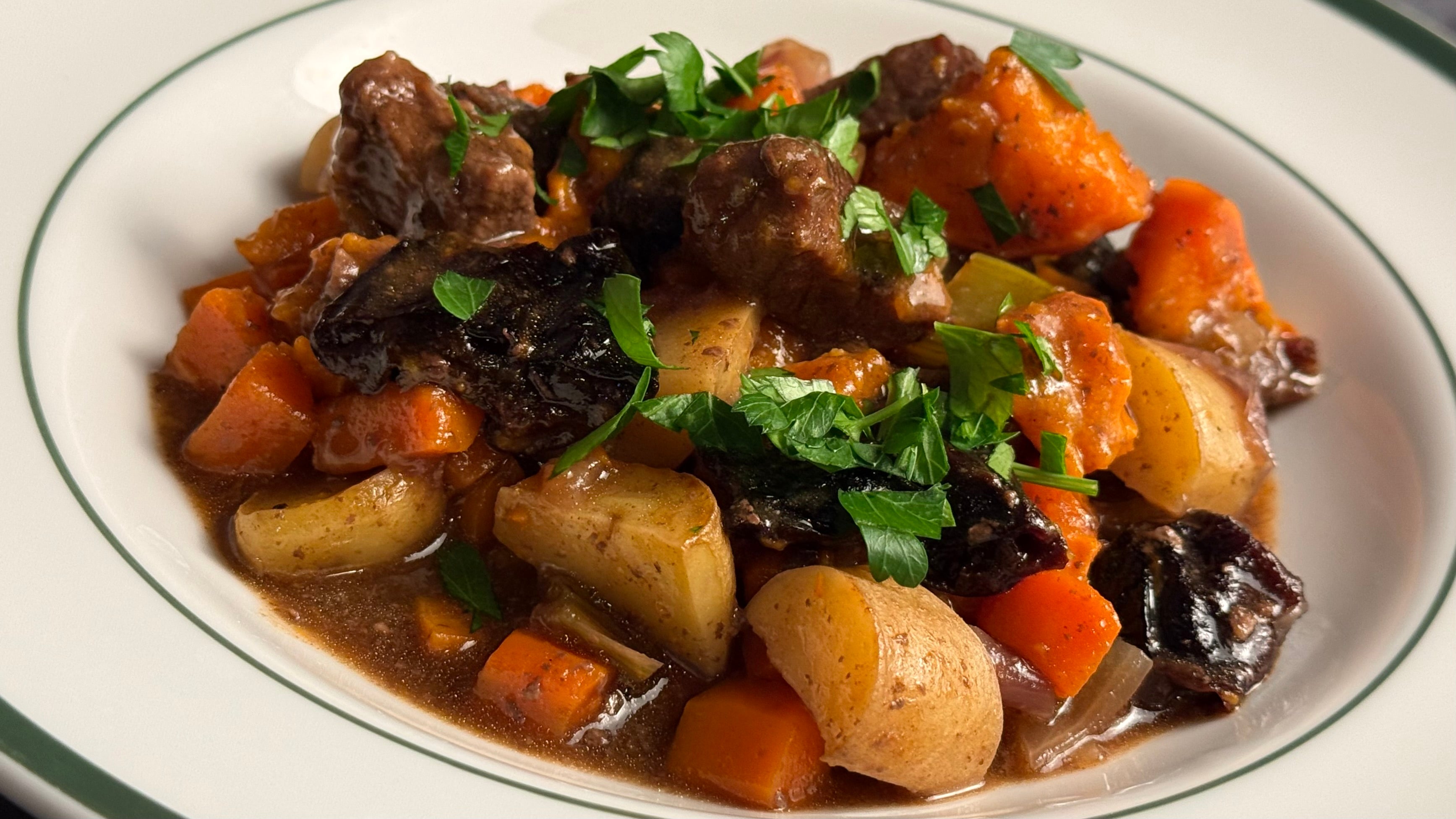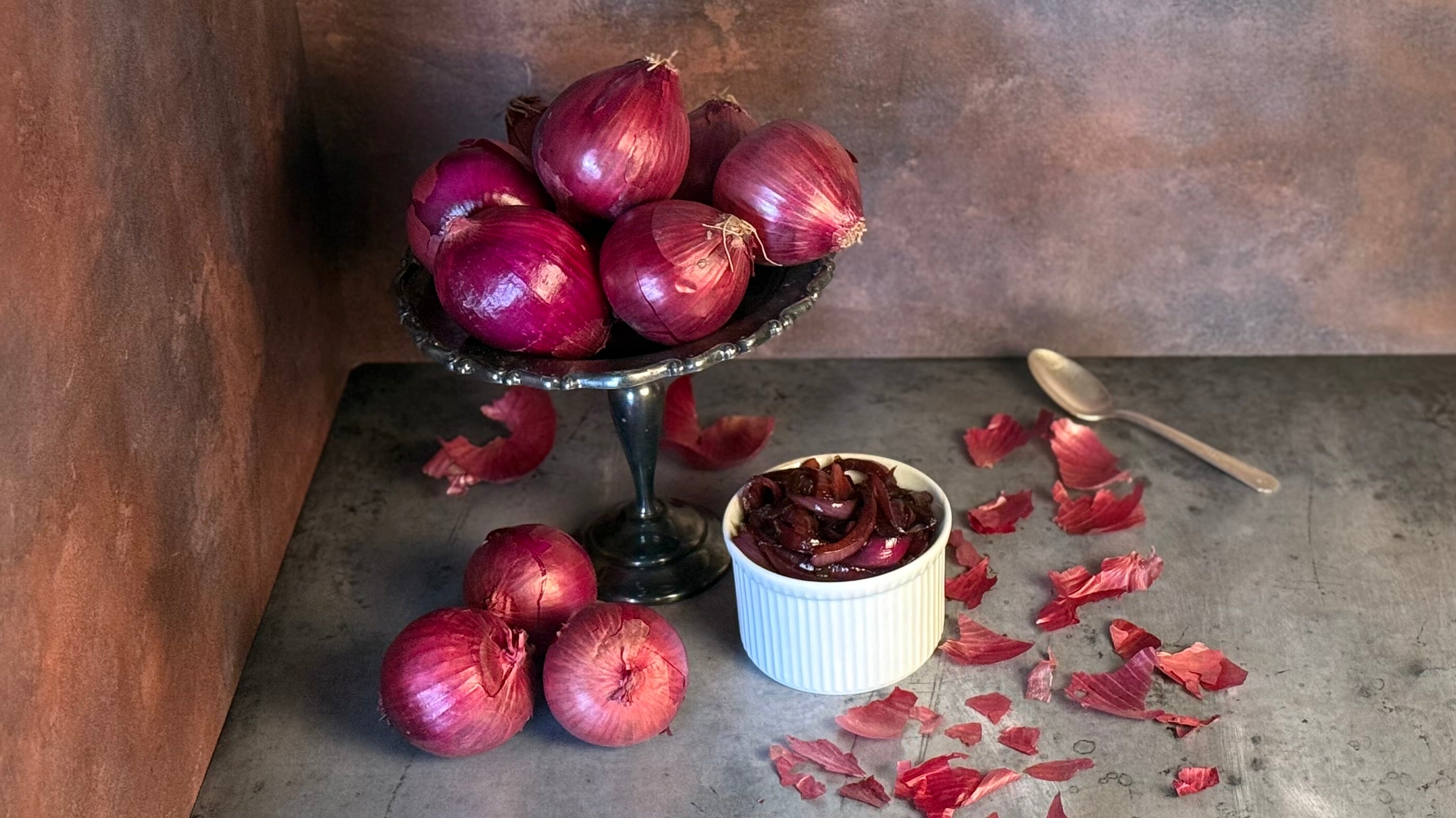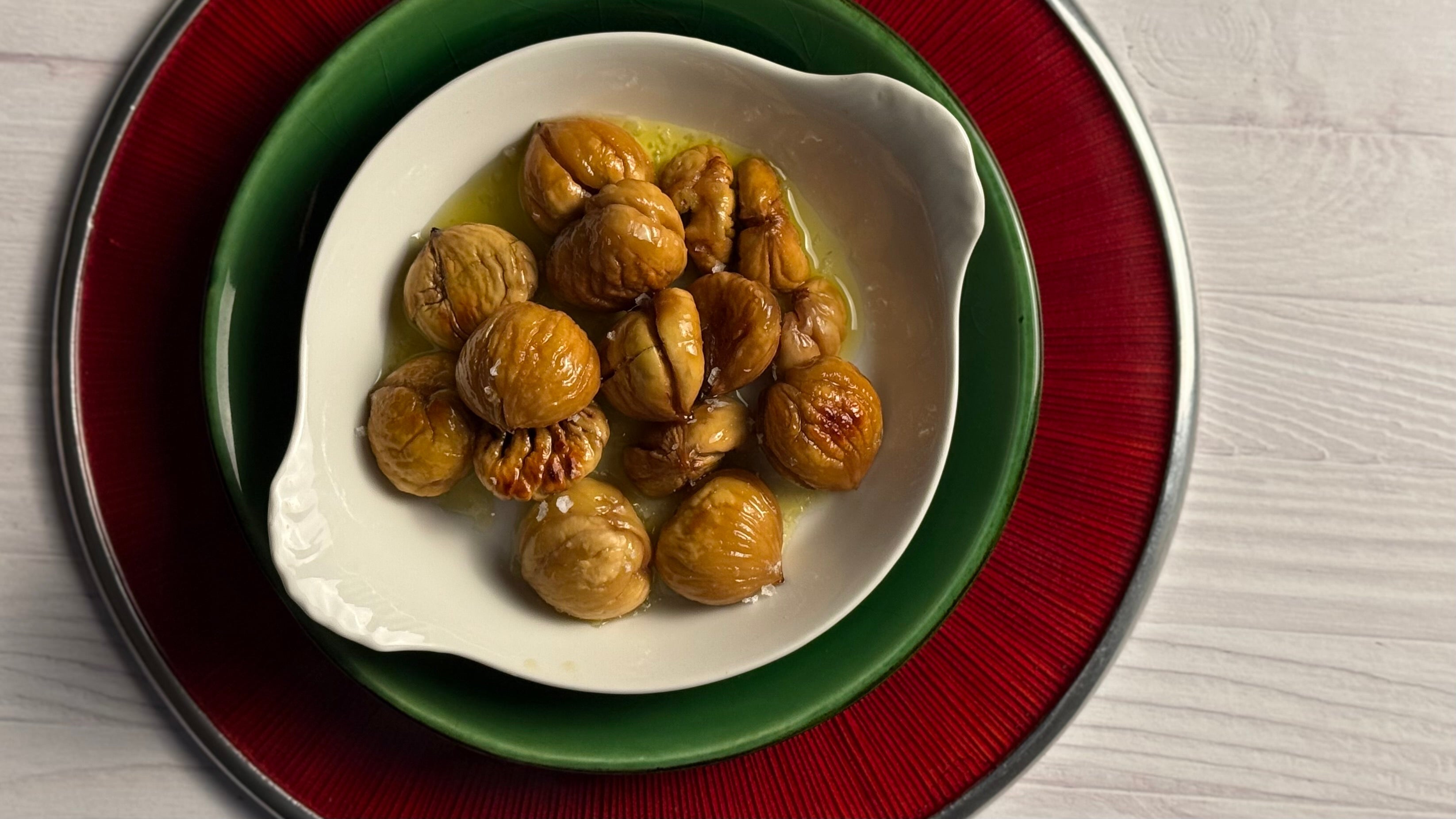
Not Your Mother's Tsimmes
Intro originally published December 2023
When I first started dating Donald in the mid 70s, his Mom used to make dinner for me from time to time, and one evening she served two things I'd never had before -- a salad with Green Goddess dressing, which I thought amazing, and tsimmes. The Green Goddess is a story for another time; tonight I'm writing to tell you about tsimmes.
Until that evening, I couldn't have imagined what magic would be made with succulent stewed chuck roast, prunes, and sweet potatoes. Sure, my kama aina Dad would add pineapple to beef for a grilled teriyaki steak-on-a-stick in the summer, but those cubes of alternating salty/dry and sweet/tart morsels were a world away from the voluptuousness of tsimmes glistening on my plate on a cold winter night. Tsimmes is soul food of the highest and most immediate order for me.
My mother-in-law left this world decades ago, but I have Donald to carry on his Mom's cooking for me, albeit with more refined technique and presentation. This is a meal that transports me in communion with centuries of Eastern European hearths. If warms my home, I share it now to warm yours.
Update from Donald December 2024
As you've already read last year's post you already know that I typically brown the meat and vegetables first and then braised them in stock when making meat stews, including Tsimmes, however, I've recently started using a simpler method which cuts down cooking time.
If you start the braising in a covered pan in the oven without browning the ingredients and then, in order to get that flavorful browning (a Maillard reaction), uncover the pan and crank up the oven for an additional 30 minutes or so until the tops of the exposed ingredients brown nicely. With this method it’s important make sure that there is liquid just below the meat before starting the uncovered browning step. If the casserole dish contains too little liquid you'll not have any sauce and the meat could burn. If, after the first step of braising, there isn’t enough liquid just add more before starting the final, uncovered, cooking step.
In the original recipe I stated that a cooking time of 2 to 3 hours. In my test this year I uncovered the meat after 1.5 hours and, along with the final 30 minutes, found that the meat was tender.
Here is this year’s simplified Tsimmes recipe along with the addition of some spiced wine for seasonal zing and some cornstarch for glossiness.
Preheat oven to 300° F
In a saucepan over medium heat add 1/2 cup of red wine with a 1 inch piece of cinnamon stick Add a 2 cloves if you have them. Reduce to 1/4 cup and set aside.
In a small bowl, add 1 Tbsp of corn starch and 2 Tbsp of water. Mix to combine.
- In a oven proof pan large enough to hold all the ingredients add the meat, stock, celery, carrots, onions, cinnamon stick and stock. Cover with foil and bake for 1.5 hours or until the meat is fork tender.
- Uncover the pan and turn the oven up to 400° F. Add the prunes, sweet and yellow potatoes, and 1/2 inch rounds of carrot to the pan and gently stir into the stew. Add more stock if more liquid is needed so that the meat is covered half way.
- Cook, uncovered, for 30 minutes or more until the potatoes and carrots are tender and the meat starts to brown.
- When done strain the sauce into a saucepan and defat as needed. Bring to a simmer. Remove the cinnamon stick and cloves from the reduced red wine. Add the cornstarch mixture and the reduced wine to the sauce. Stir and cook until thickened slightly.
- Remove the other cinnamon stick from the stew and add all the ingredients from the stew to the sauce. Stir gently to combine and add salt and pepper to taste.
Keep reading to see the "classic" version from 2023.





